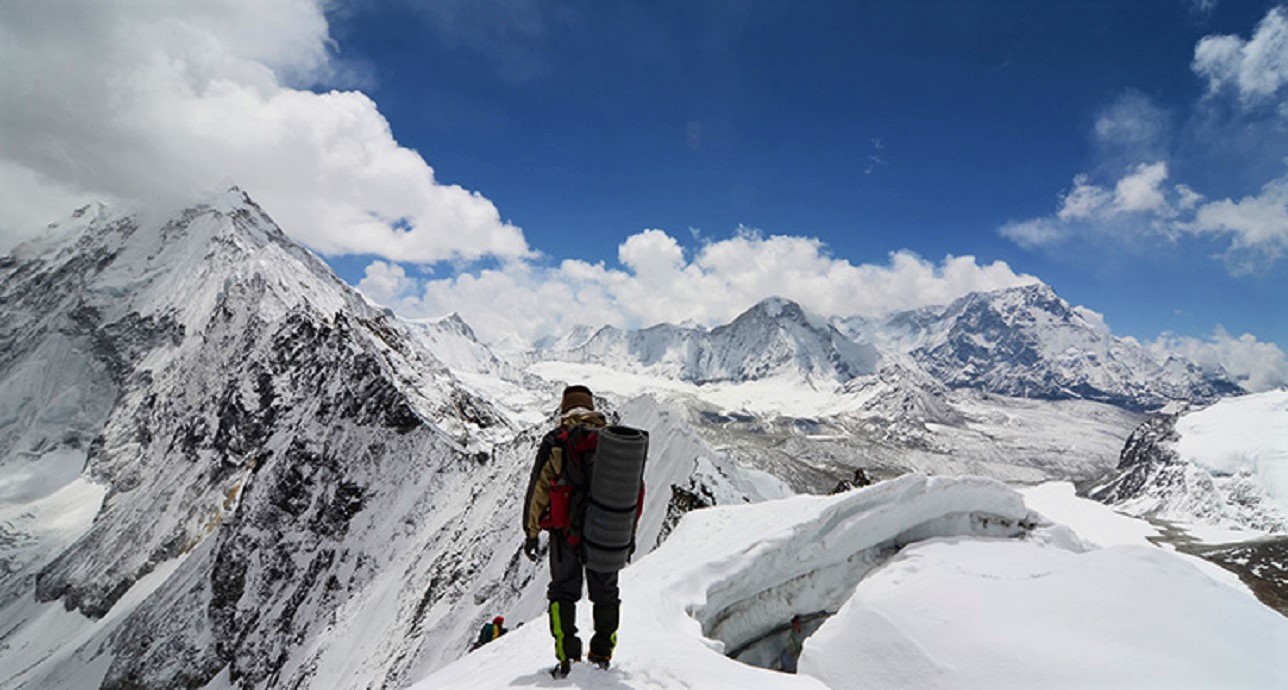Interesting things about Amphu Lapcha Pass | All you need to know about Amphu Lapcha Pass
Amphu Lapcha Pass is a high mountain pass located in the Everest region of Nepal. It connects the Khumbu Valley with the Imja Valley and is known for its technical challenges and stunning alpine landscapes. Here's everything you need to know about Amphu Lapcha Pass:
1. Location and Altitude:
Amphu Lapcha Pass is situated in the remote Hinku Valley, which lies to the east of the popular Everest region in Nepal. The pass connects the Khumbu Valley to the west with the Imja Valley to the east. It stands at an altitude of approximately 5,845 meters (19,180 feet) and is surrounded by towering peaks, including Amphu and Tharpu Chuli (Tent Peak).
2. Trekking and Mountaineering Route:
Amphu Lapcha Pass is typically included as part of a challenging and adventurous trekking route that combines the Mera Peak climb and the Island Peak climb. The journey begins with a flight from Kathmandu to Lukla, followed by a trek through the Hinku Valley to Mera Base Camp. From there, trekkers ascend Mera Peak (6,476 meters) before descending into the Hinku Valley. The route then leads to the base camp of Amphu Lapcha Pass, which involves navigating through steep snow slopes, ice walls, and crevasses. After crossing the pass, trekkers descend into the Imja Valley and continue towards Island Peak (6,189 meters) before returning to Lukla.
3. Difficulty and Mountaineering Skills:
Amphu Lapcha Pass is known for its technical challenges and demands mountaineering skills and experience in alpine environments. The pass requires the use of mountaineering equipment such as ropes, crampons, ice axes, and harnesses. Trekkers must be proficient in glacier travel, rope techniques, and ice climbing. The ascent and descent involve traversing steep snow and ice slopes and negotiating crevasses. Due to the technical nature of the pass, it is recommended for experienced trekkers with prior mountaineering experience.
4. Scenery and Views:
The trek to Amphu Lapcha Pass offers breathtaking panoramic views of some of the highest peaks in the world, including Mount Everest, Lhotse, Nuptse, Ama Dablam, and many others. The trail takes trekkers through diverse landscapes, ranging from lush forests to high alpine meadows and glacial valleys. Along the way, you'll encounter stunning glaciers, pristine lakes, and remote Sherpa settlements. The scenery is truly awe-inspiring and rewards trekkers with unforgettable vistas throughout the journey.
5. Weather and Best Time to Visit:
The best time to attempt Amphu Lapcha Pass is during the pre-monsoon (spring) and post-monsoon (autumn) seasons. The months of April to May and September to November offer relatively stable weather conditions with clear skies, making it suitable for trekking and mountaineering activities. However, weather conditions in the mountains can change rapidly, and it's important to be prepared for cold temperatures, strong winds, and occasional snowfall at higher elevations.
6. Safety Considerations:
Due to the technical nature of Amphu Lapcha Pass, it is crucial to undertake this trek with a professional guide who has extensive experience in the region and mountaineering expertise. Safety precautions and proper equipment, including warm clothing, sturdy trekking boots, crampons, harnesses, ice axes, and ropes, are essential. Adequate acclimatization and physical fitness are also important to mitigate the risks associated with high-altitude trekking and mountaineering.
7. Permits:
To embark on the Amphu Lapcha Pass trek, trekkers need to obtain necessary permits. These include the Sagarmatha National Park entry permit and the Makalu Barun National Park entry permit, as the route passes through these protected areas. These permits can be obtained in Kathmandu or at the respective park entry points.




.jpg)



